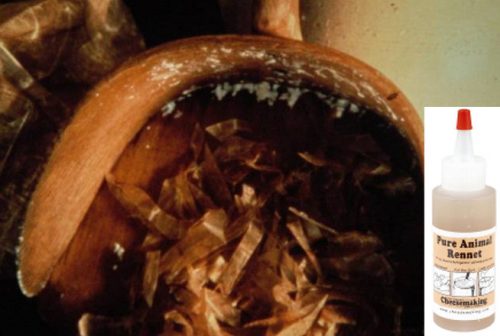Cheese is made from rennet which is made from calf stomach

Cheese is made from rennet, which is made from calf stomach.

When we think about cheese, our taste buds start tingling in anticipation of its delicious flavor. But have you ever wondered how this delectable dairy product is made? One fascinating fact about cheese that often surprises people is that it is made from rennet, which is derived from the stomach of calves.
Rennet is a complex mixture of enzymes that helps in the process of cheese-making. Traditionally, it has been sourced from the stomach lining of young calves. This may sound strange, but it’s a crucial component in coagulating milk and turning it into the creamy, solid cheese that we all love.
The use of calf stomach in cheese production dates back centuries. Ancient cheese-makers discovered that the rennet contained in the stomach lining has the remarkable ability to curdle milk. This curdling process is essential for separating the liquid whey from the milk solids and forming the unique texture and flavor of cheese.
But how does rennet work? Inside the calf’s stomach, there are specific enzymes that aid in the digestion of milk. One of these enzymes is called chymosin, which is primarily responsible for curdling the milk. Chymosin breaks down a protein called kappa-casein, causing the milk to separate into curds and whey.
In modern cheese production, the use of calf rennet is still prevalent, although there are alternative sources available. Genetic engineering has played a significant role in producing microbial or vegetable rennet, which is suitable for vegetarian cheese-making.
Cheese-making enzymes can now be developed through genetic modification of bacteria or fungi. These genetically modified organisms (GMO) produce chymosin without the need for extracting it from calf stomachs. This sustainable and ethical alternative has gained popularity, as it eliminates the need for animal-derived rennet.
It’s important to note that the use of calf rennet in cheese production is not limited to traditional cheese varieties. Even popular cheeses like Parmesan, Gouda, and Cheddar can often contain calf rennet. However, today’s consumers have a diverse range of cheese options available, including those made with microbial or vegetable rennet.
In conclusion, cheese-making involves the use of rennet, which is derived from the stomach of calves. This fascinating fact highlights the historical significance of calf-stomach rennet in cheese production. However, advancements in genetic engineering have introduced alternative sources of rennet that are suitable for various dietary preferences. So, the next time you enjoy a slice of cheese, you can appreciate the intricate process involved in its creation.
Source: You Can Thank Genetic Engineering for Your Delicious Cheese
Tags
Share
Related Posts
Quick Links
Legal Stuff

